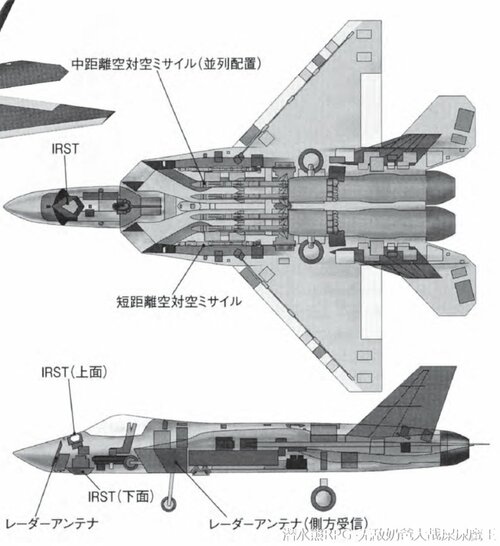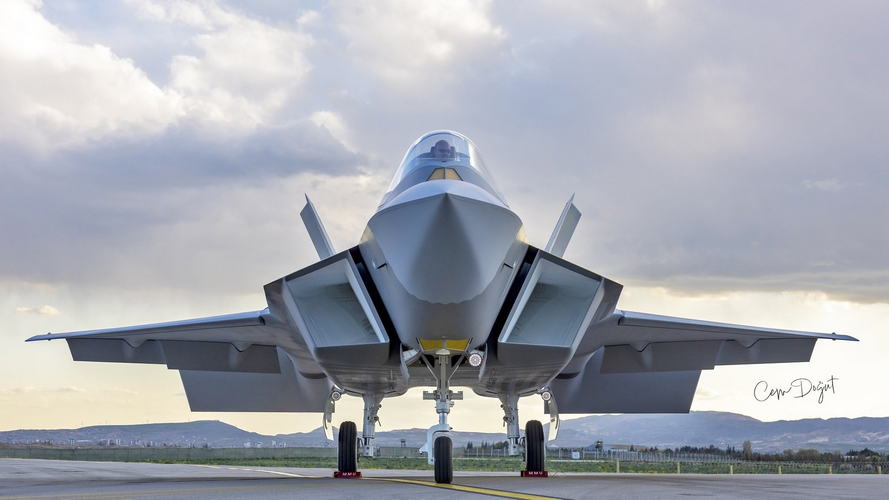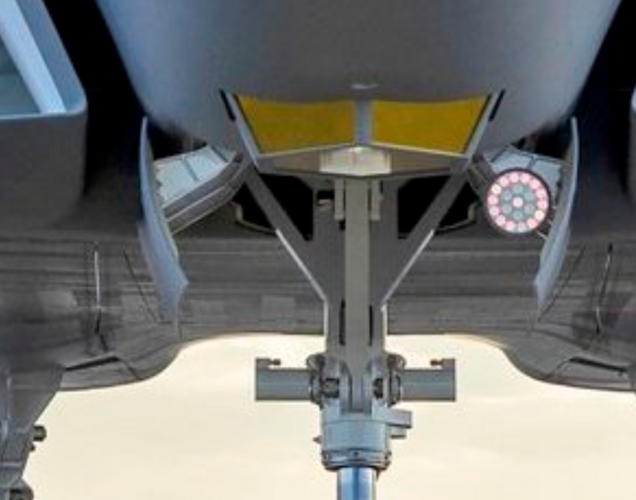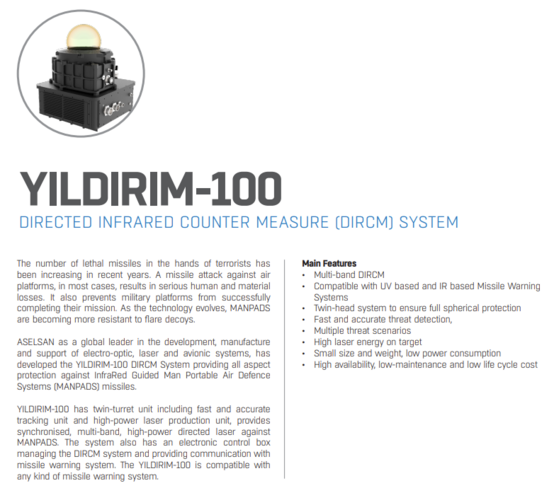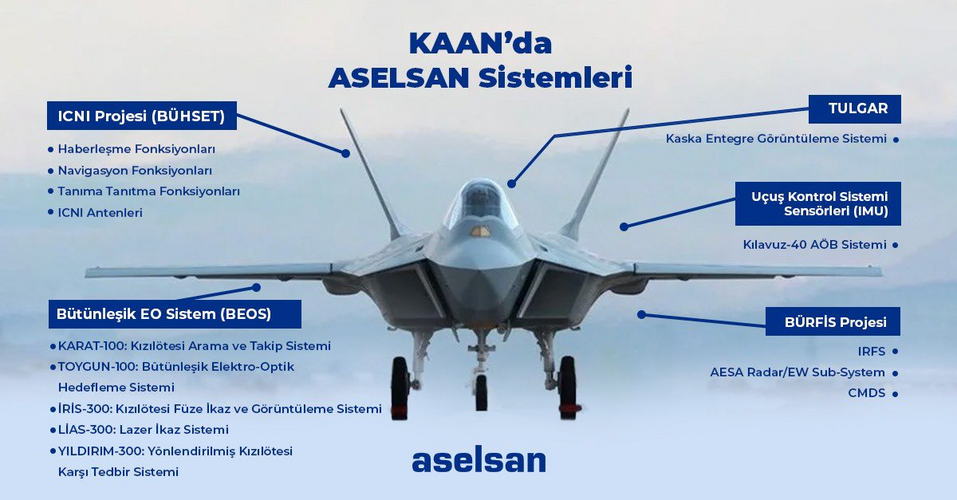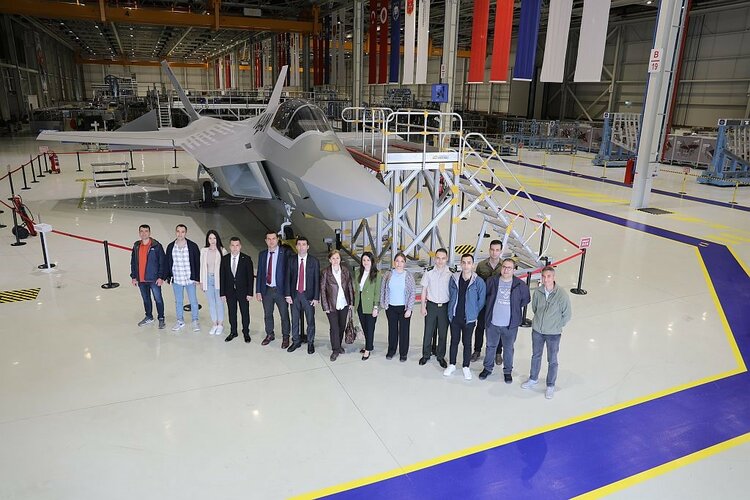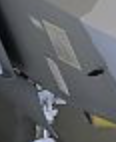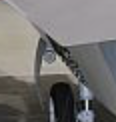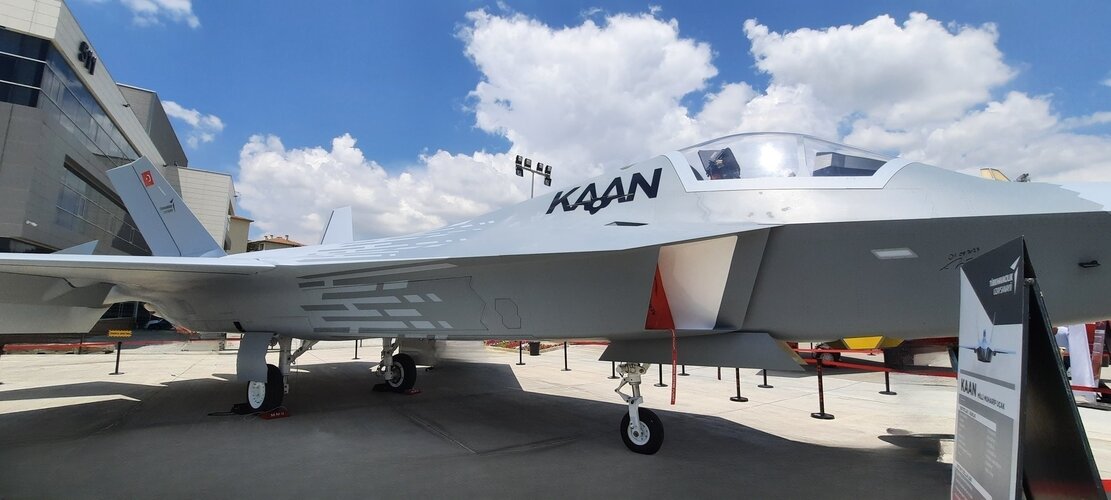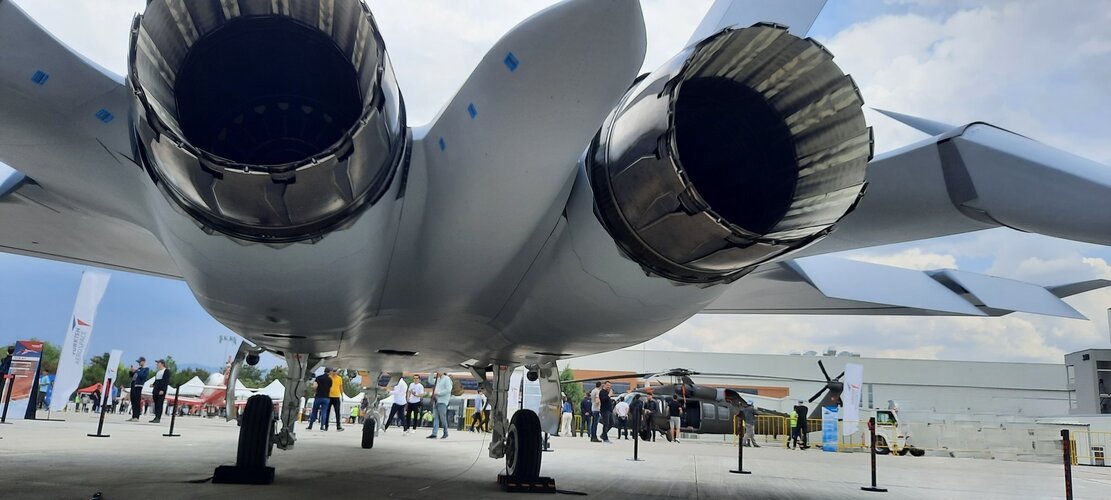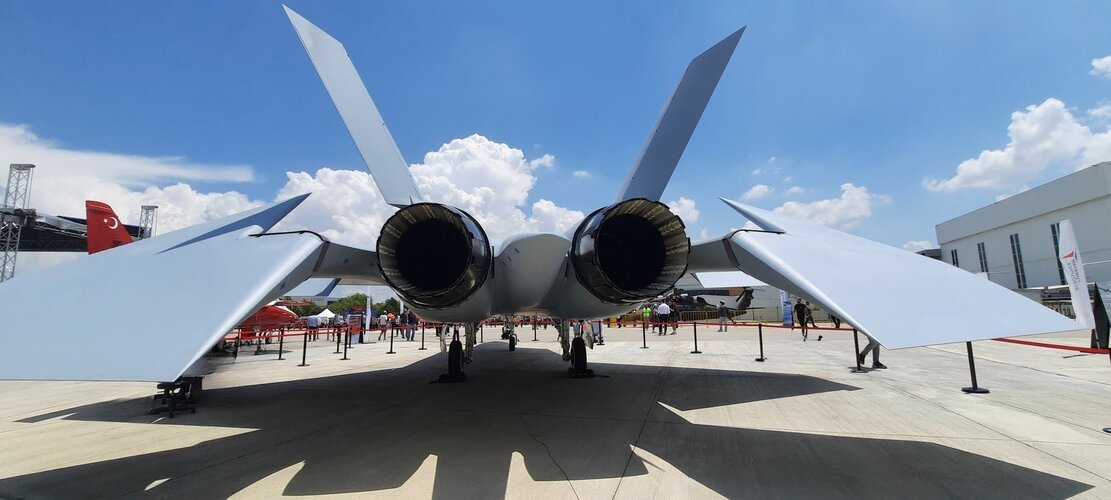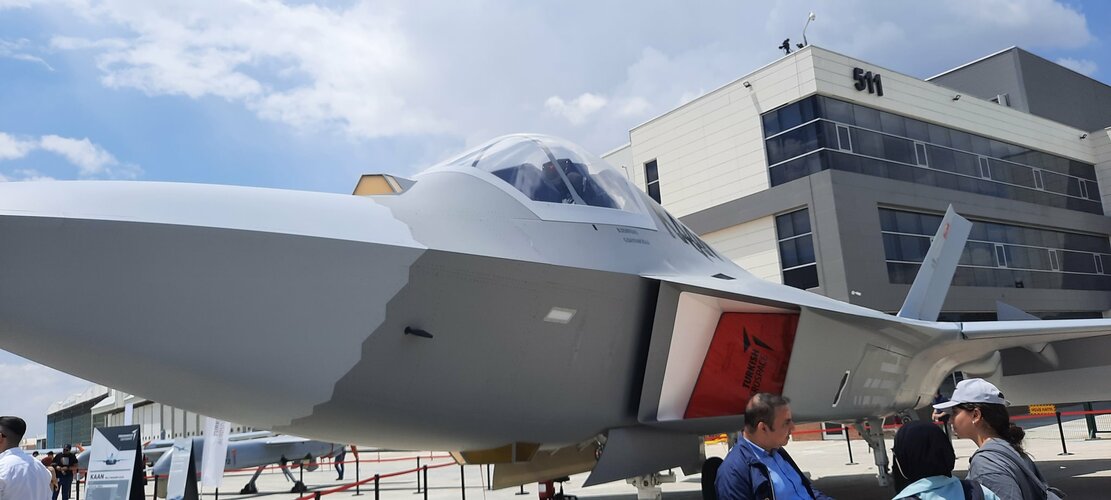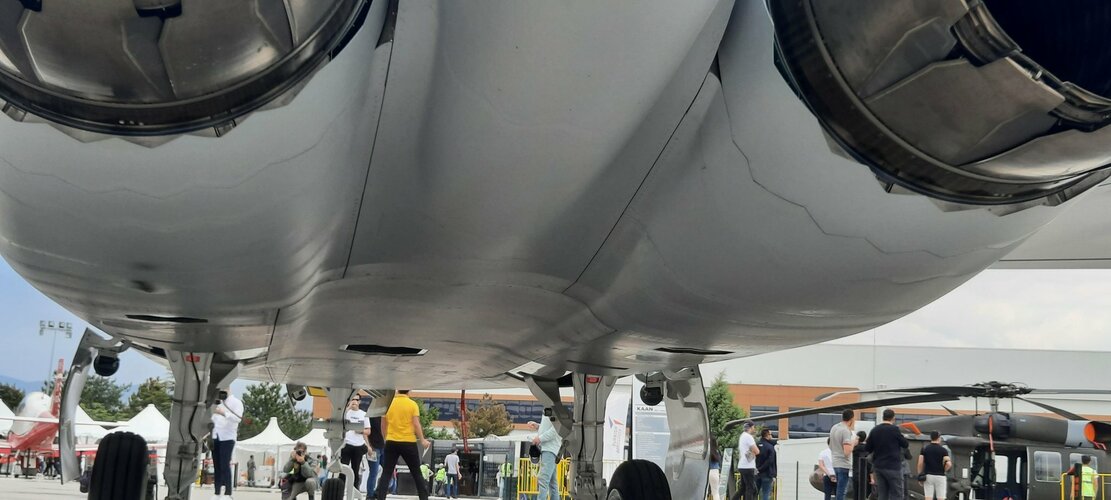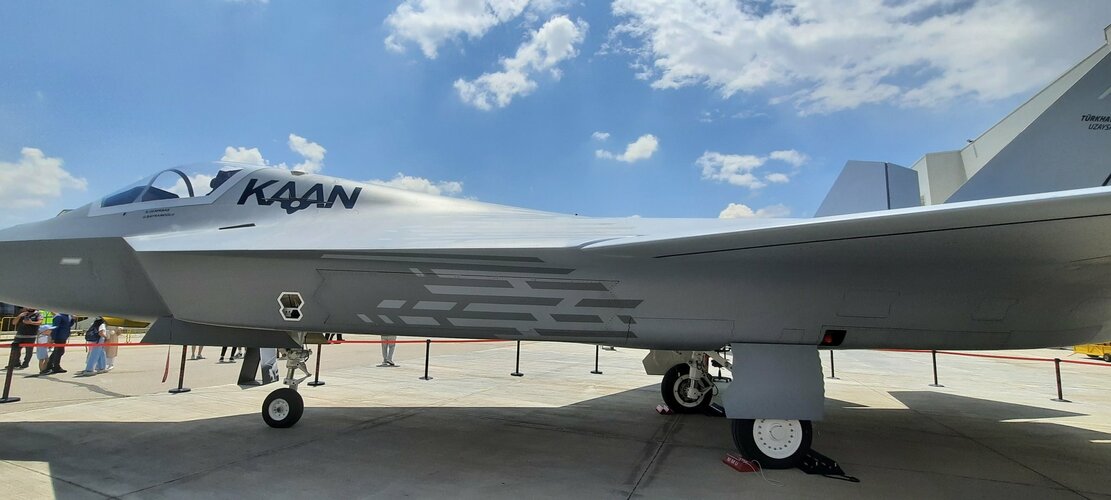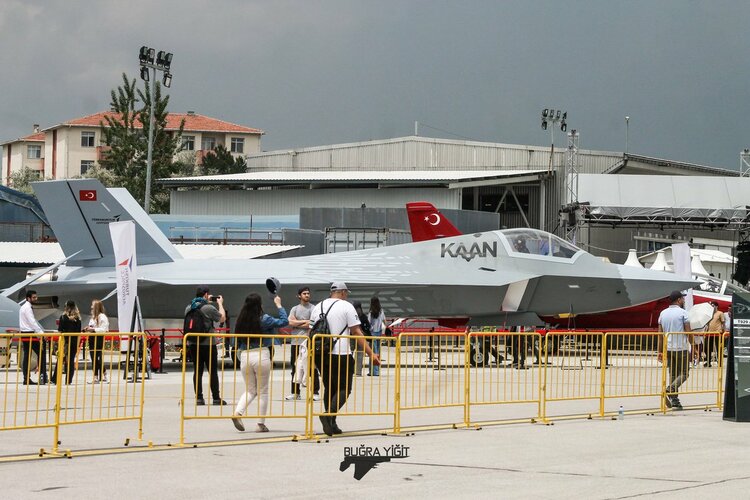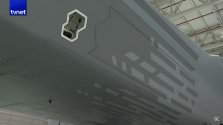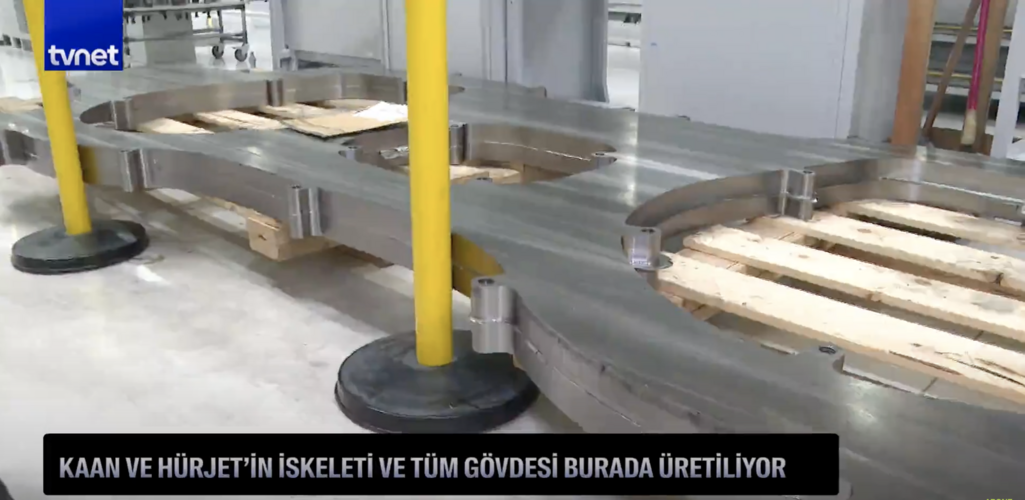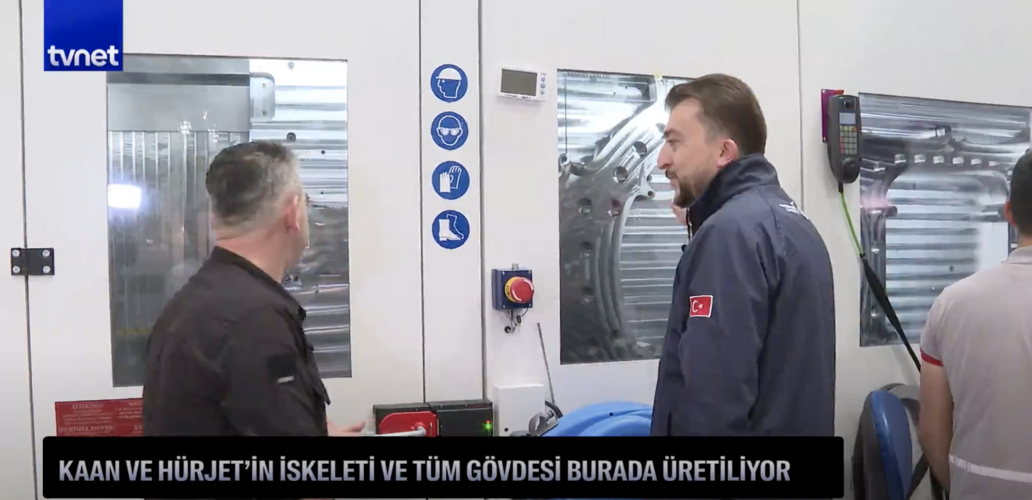You are using an out of date browser. It may not display this or other websites correctly.
You should upgrade or use an alternative browser.
You should upgrade or use an alternative browser.
TAI TF-X / Milli Muharip Uçak MMU Kaan
- Thread starter ocay
- Start date
Apart from being a generic 5th gen shape I don't see a single resemblance.
Landing gear isn't close
Wing shape isn't close
Vert / horizontal stab wrong
cockpit completely different
size wrong
Do I need to go on.
Landing gear isn't close
Wing shape isn't close
Vert / horizontal stab wrong
cockpit completely different
size wrong
Do I need to go on.
- Joined
- 29 November 2010
- Messages
- 1,773
- Reaction score
- 3,474
same, I thought so too. Its just a generic 5th gen shape.Apart from being a generic 5th gen shape I don't see a single resemblance.
Landing gear isn't close
Wing shape isn't close
Vert / horizontal stab wrong
cockpit completely different
size wrong
Do I need to go on.
jury is still out on the IWB configuration of the KAAN.
I am not fully convinced the bottom bays are tandem, due to some of the paneling edges in some pics.
it may be side by side like the J-20/F-22
- Joined
- 15 July 2020
- Messages
- 1,482
- Reaction score
- 4,563
Weight summary:
engine 1778 kg
power plant 7100 kg
fuselage 5,300 kg
wings 1100 kg
stabilizers 360 kg
keels 240 kg
glider without landing gear 7000 kg
chassis 700 kg
airframe with chassis 7700 kg
equipment 2200 kg
empty 19760 kg
curb weight 19900 kg
fuel 7000 kg
normal, 50% fuel 24500 kg
maximum, 100% fuel 27000 kg
maximum 37000 kg
pilot 100 kg
engine 1778 kg
power plant 7100 kg
fuselage 5,300 kg
wings 1100 kg
stabilizers 360 kg
keels 240 kg
glider without landing gear 7000 kg
chassis 700 kg
airframe with chassis 7700 kg
equipment 2200 kg
empty 19760 kg
curb weight 19900 kg
fuel 7000 kg
normal, 50% fuel 24500 kg
maximum, 100% fuel 27000 kg
maximum 37000 kg
pilot 100 kg
-TRMOTOR was established by SSTEK in Ankara in 2017 to carry out design and development activities in the field of turbine engine technologies in Turkey.
-The partnership structure was updated in 2021 and the company became a subsidiary of TAI.
-TRMOTOR signed on February 12, 2021 (in order to determine the system and subsystem level requirements for a turbofan engine that can meet the thrust needs of the aircraft under development within the scope of the National Combat Aircraft Project.) to start the engine thermodynamic cycle studies, and to start the system conceptual design studies based on the cycle data obtained. The Indigenous Aircraft Engine Development Program carried out the project activities within the scope of the Ukraine Cooperation Project and the project was completed in the same year.
-Also in 2021, TRMOTOR started to work on the design of the APU, which is a necessity for the National Combat Aircraft Development Project.
-TEI and Ivchenko Progress presented a proposal for the Preliminary Design Phase Project tender initiated by the SSB within the scope of MMU Indigenous Aircraft Engine Development Program, with TRMotor being the main contractor.
@Radonislav
-The partnership structure was updated in 2021 and the company became a subsidiary of TAI.
-TRMOTOR signed on February 12, 2021 (in order to determine the system and subsystem level requirements for a turbofan engine that can meet the thrust needs of the aircraft under development within the scope of the National Combat Aircraft Project.) to start the engine thermodynamic cycle studies, and to start the system conceptual design studies based on the cycle data obtained. The Indigenous Aircraft Engine Development Program carried out the project activities within the scope of the Ukraine Cooperation Project and the project was completed in the same year.
-Also in 2021, TRMOTOR started to work on the design of the APU, which is a necessity for the National Combat Aircraft Development Project.
-TEI and Ivchenko Progress presented a proposal for the Preliminary Design Phase Project tender initiated by the SSB within the scope of MMU Indigenous Aircraft Engine Development Program, with TRMotor being the main contractor.
@Radonislav
The radar absorbing materials developed for the National Combat Aircraft (KAAN) has reached a success level of 97 percent.
View: https://twitter.com/SavunmaSanayiST/status/1665797061248270338?s=20
View: https://twitter.com/SavunmaSanayiST/status/1665797061248270338?s=20
is there any reason that the newly founded TRMotor became the main contractor, not TEI?-TRMOTOR was established by SSTEK in Ankara in 2017 to carry out design and development activities in the field of turbine engine technologies in Turkey.
-The partnership structure was updated in 2021 and the company became a subsidiary of TAI.
-TRMOTOR signed on February 12, 2021 (in order to determine the system and subsystem level requirements for a turbofan engine that can meet the thrust needs of the aircraft under development within the scope of the National Combat Aircraft Project.) to start the engine thermodynamic cycle studies, and to start the system conceptual design studies based on the cycle data obtained. The Indigenous Aircraft Engine Development Program carried out the project activities within the scope of the Ukraine Cooperation Project and the project was completed in the same year.
-Also in 2021, TRMOTOR started to work on the design of the APU, which is a necessity for the National Combat Aircraft Development Project.
-TEI and Ivchenko Progress presented a proposal for the Preliminary Design Phase Project tender initiated by the SSB within the scope of MMU Indigenous Aircraft Engine Development Program, with TRMotor being the main contractor.
@Radonislav
I heard that TEI was the best in turbofan manufacturing and engineering in Turkiye
TEI and TRMotor are currently working together. Ivchenko Progress joined the efforts as well.is there any reason that the newly founded TRMotor became the main contractor, not TEI?-TRMOTOR was established by SSTEK in Ankara in 2017 to carry out design and development activities in the field of turbine engine technologies in Turkey.
-The partnership structure was updated in 2021 and the company became a subsidiary of TAI.
-TRMOTOR signed on February 12, 2021 (in order to determine the system and subsystem level requirements for a turbofan engine that can meet the thrust needs of the aircraft under development within the scope of the National Combat Aircraft Project.) to start the engine thermodynamic cycle studies, and to start the system conceptual design studies based on the cycle data obtained. The Indigenous Aircraft Engine Development Program carried out the project activities within the scope of the Ukraine Cooperation Project and the project was completed in the same year.
-Also in 2021, TRMOTOR started to work on the design of the APU, which is a necessity for the National Combat Aircraft Development Project.
-TEI and Ivchenko Progress presented a proposal for the Preliminary Design Phase Project tender initiated by the SSB within the scope of MMU Indigenous Aircraft Engine Development Program, with TRMotor being the main contractor.
@Radonislav
I heard that TEI was the best in turbofan manufacturing and engineering in Turkiye
I mean, founding a brand new company and then make it a subsidiary to TAI and the main contractor, then cooperate with the already existing TEI is kinda janky way to conduct a national projectTEI and TRMotor are currently working together. Ivchenko Progress joined the efforts as well.
Wondering if there was any bureaucratic obstacles or sth, you know
Last edited:
Oh I get what you mean. Yeah it's interesting. Don't know the details.I mean, founding a brand new company and then make it a subsidiary to TAI and the main contractor, then cooperate with the already existing TEI is kinda janky way to conduct a national projectTEI and TRMotor are currently working together. Ivchenko Progress joined the efforts as well.
Wondering if there was any bureaucratic obstacles or sth, you know
- Joined
- 15 July 2020
- Messages
- 1,482
- Reaction score
- 4,563
Radonislav
ACCESS: Confidential
- Joined
- 16 November 2022
- Messages
- 152
- Reaction score
- 214
Yeah, IG by changes he meant those
Last edited by a moderator:
- Joined
- 15 July 2020
- Messages
- 1,482
- Reaction score
- 4,563
Looks like some paper taped to the side..
Last edited by a moderator:
- Joined
- 24 November 2008
- Messages
- 1,549
- Reaction score
- 2,609
Tandem weapons bay confirmed ?
View attachment 700696
I have a hard time to see tandem weapons bays on the pics posted above.
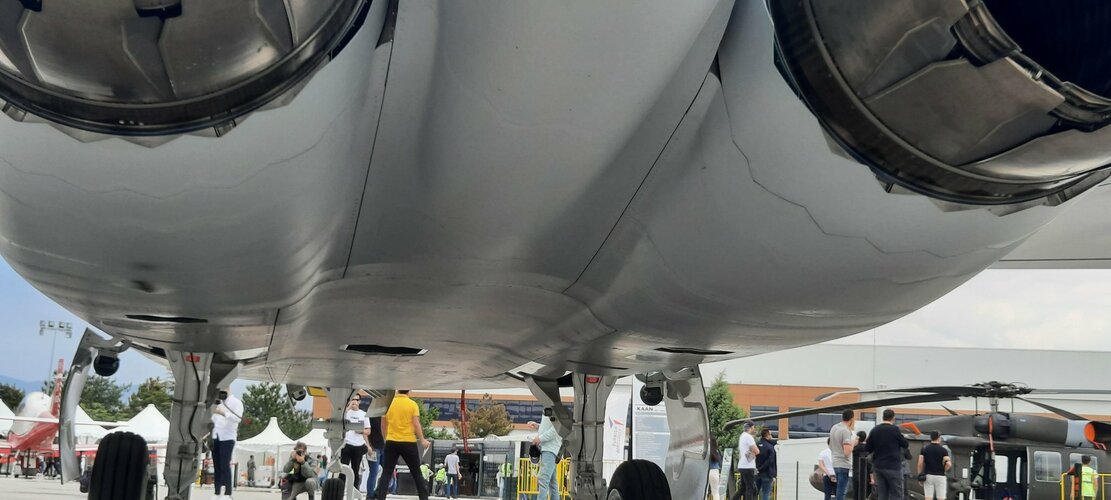
Radonislav
ACCESS: Confidential
- Joined
- 16 November 2022
- Messages
- 152
- Reaction score
- 214
It is tandem, just there are basic covers under the place allocatedTandem weapons bay confirmed ?
View attachment 700696
I have a hard time to see tandem weapons bays on the pics posted above.
View attachment 701310
FighterJock
ACCESS: Above Top Secret
- Joined
- 29 October 2007
- Messages
- 5,597
- Reaction score
- 5,925
Any ideas as to how many missiles the Kaan will carry in the weapon bays? Three? Giving a total of six air-air missiles across the two bays.
Jackonicko
ACCESS: Secret
- Joined
- 4 February 2009
- Messages
- 386
- Reaction score
- 907
Your question is most legitimate, and I will try to answer it as best as possible :I have big doubts on the fact that this aircraft can fly, as it is depicted here.
- Turkey does not have an operational fly by wire system yet. It is probably the most complex part to design in a modern fighter aircraft. For now, they are still working on it, but it may take years before Kaan can take off, as an unstable and FBW driven plane. Therefore, Turkey may still have a extensive amount of design reworks to perform to reach the final result. Even for major nations of aerospace, like USA, Russia, France, UK, Sweden, China and Japan it was really hard to get operational fly by wire systems. Just remember that first F-16 almost crashed, First JAS-39 was destroyed, and T-2CCV almost stall when raising main undercarriage. Therefore, it's not impossible, but it's gonna be really difficult for them to get a good FBW system, while we all know that during the rollout of Kaan, they had issues to maintain a straight line on ground. Even China got an operational analog FBW system from a given F-16 but also from Lavi technology in the 80s. You will also note that to operate such a complex aircraft as Kaan, a analog FBW may not be sufficient. Therefore, a digital FBW computer may be necessary, to operate Kaan within such a complex flight enveloppe that what specifications demands.
- Aircraft itself is huge. While it is believed to be in the end an unstable fighter to have the best maneuverability and without thrust vector control, this aircraft will nevetheless have to sustain high AOA and Gs, which J-20 for example is not capable to perform, which shares a close size with Kaan. Therefore, I think that the choice of a big fighter like that wasn't so wise, but unfortunately necessary, for power plant reasons. A fighter aircraft is indeed always designed around its power plant. Because of its alliances, the only engine that was sufficient for Kaan's specifications was the GE-129. The other candidates wouldn't have had sufficient power to match Kaan's requirements, including supercruise capability (I don't believe that Kaan will anyway ever get a mach 1.2+ supercruise asset, and will remain like Rafale, Eurofighter or F-35). So, aircraft has been necessary designed as huge, to store the big amount of necessary fuel for the mission this aircraft is supposed to have, from MoD's specifications. Also, I feel doubtful that these engines may be compatible with a stealth application. I then think that this aircraft will have a RCS optimization, like KF-21 or Rafale, rather than being a full stealth fighter like F-22 or F-35. F-119 and F-135 engines were specifically designed to for a stealthy application. It was never the case for F-110 GE-129.
- Aerodynamically speaking, I have no figures to illustrate my statements, but there is some stuff I feel a bit concerned by :
Don't take me wrong : I really wish all the best for Kaan. But I believe that if it flies one day, she will have a quite different design that what we see now. Like F-22 for example !
- Cockpit position. I suspect possible instability issues from the unprogressive design of the cockpit area. On J-35, which shares a similar configuration, it looks much smoother.
- Wing angle of attack : it's surprising to have the choice of a negative wing pitch angle, while Kaan's heading line is slightly positive. I suspect that it was a compensation solution rather than a performance optimization concept.
- I don't have enough views to exactly precise my understanding, but geometry of J-22 and F-35 are smoothy everywhere, with a very complex structure (F-22 wing for example is just an heaven of aerodynamic engineering). On Kaan, it looks so straight, and I feel a bit surprised by this choices. Even on J-35 and KF-21 airframe is smooth and progressive.
Radium
"(I don't believe that Kaan will anyway ever get a mach 1.2+ supercruise asset, and will remain like Rafale, Eurofighter or F-35)" How do you mean? One of those does supercruise significantly above M 1.2
Radonislav
ACCESS: Confidential
- Joined
- 16 November 2022
- Messages
- 152
- Reaction score
- 214
Would depend on the missile tbhAny ideas as to how many missiles the Kaan will carry in the weapon bays? Three? Giving a total of six air-air missiles across the two bays.
red admiral
ACCESS: Top Secret
- Joined
- 16 September 2006
- Messages
- 1,805
- Reaction score
- 2,375
What is that? The unmachined billet for a major fuselage frame? It's difficult to get an idea of scale
Titanium bulkhead.What is that? The unmachined billet for a major fuselage frame? It's difficult to get an idea of scale
- Joined
- 15 July 2020
- Messages
- 1,482
- Reaction score
- 4,563
TRMOTOR dropped this image on their Twitter, rendering of KAANs engine and apu

View: https://twitter.com/TRMotor/status/1668551174268526592?s=20
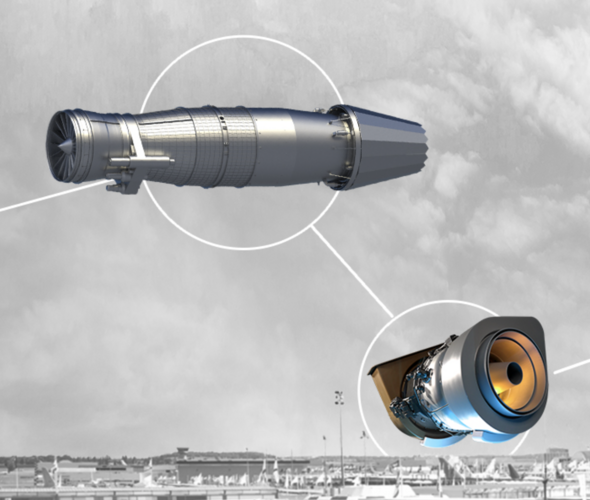
View: https://twitter.com/TRMotor/status/1668551174268526592?s=20
- Joined
- 15 July 2020
- Messages
- 1,482
- Reaction score
- 4,563
KAAN engineering development simulator, over 130 simulated flight hours have been accumulated
View: https://twitter.com/gooksel/status/1668595260514095106?s=20

View: https://twitter.com/gooksel/status/1668595260514095106?s=20
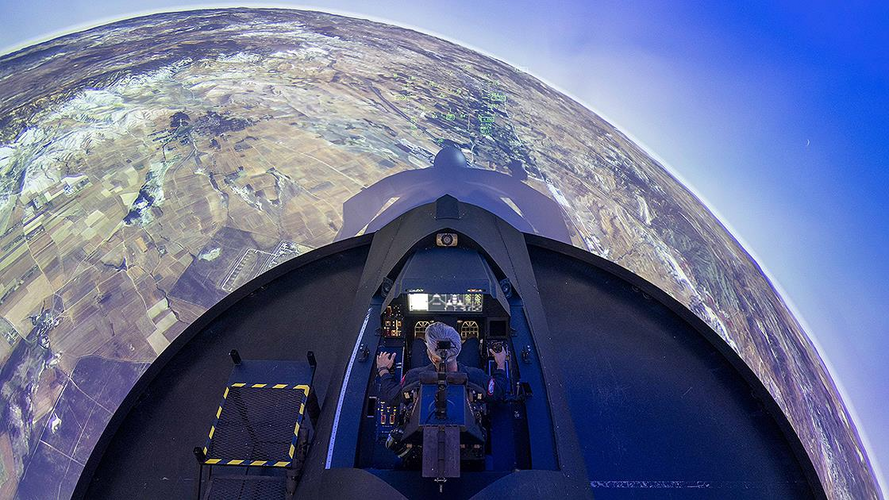
Last edited:
Radonislav
ACCESS: Confidential
- Joined
- 16 November 2022
- Messages
- 152
- Reaction score
- 214
Nope, those side ones are just access hatches

Dear Bora Çetkin took these pictures yesterday. As we can see, KAAN has 3 side-by-side weapon bays. I think the middle one accommodates larger munitions such as the MK series bombs or SOM-J missiles.
Test Pilot Gökhan Bayramoğlu:KAAN engineering development simulator, over 130 simulated flight hours have been accumulated
View: https://twitter.com/gooksel/status/1668595260514095106?s=20
View attachment 701450
"For us, the engineering part of the simulator is very important. Because as engineers, we will try to capture as much as possible in the first flight by testing the data that our team has designed, designed and expected to see in the simulator as test pilots. In the piloting part, it will be as follows: About the first flight on our aircraft and the prototypes that will come after that. We are trying to determine the procedures that the pilot should do by processing the pilot interfaces, how we can further reduce the pilot's workload, or by processing the emergency procedures and transferring them to our aircraft's user manual."
"All engineering and piloting capabilities are now supported by the simulator in current systems. After being supported with a simulator on the ground and verified, we only want to see how much this information deviates in the air and how accurately our work on the computer guides us. That's why the simulator is vital for us. We have over 40 flights in the simulator. We have approximately 120-130 hours of flight time. The feature of this simulator is not only the first flight. Our aircraft consists of two main elements. Aircraft and mission part. KAAN will be a weapon for us, not an airplane. Therefore, we want to make KAAN very powerful not only in terms of aircraft, performance, but also in terms of air-air, air-ground and electronic operations. That's why we try to improve ourselves by testing the applications, interfaces and effects of all the systems we need on this simulator. In the coming years, the number of our simulators will increase. Our simulators will continue as development and engineering. After that, it will continue as training simulators. In order to provide training to the pilots of our Air Force, we will also charge them simulators. After the pilots of our Air Force are trained here, we will bring them to the level where they will train new pilots with our simulators."
"It is an aircraft whose performance exceeds that of known and existing aircraft. We have very powerful engines. We use our simulators intensively to be able to use these engines and to familiarize the pilot with these engines. We try to make things about our simulators as realistic as possible. Then they will make their first flights. That's why we value the simulator so much, we do our best to improve it."
Simulator and Training Systems Integration Product Manager Gökhan Şimşek:
"Simulator infrastructures are infrastructures that can bring 200 to 1 in projects if they can be designed and executed at the right time. This return can be considered in terms of both time and cost." Şimşek said, "This kind of engineering simulator infrastructures are needed for such a big project to be less retroactive. We have been designing this infrastructure since 2016. How far we have solved the problem that we said we have solved on the table, we are prototyping it by going a few steps ahead. We go and see the taxi and engine start-up here before you see it, and we prototype it."
"We are where we planned, but the development process of this environment will continue with the aircraft. As long as the blocks of our aircraft grow, we will always go one step ahead and continue to solve some problems from the front here. We operate the infrastructure with two integrated structures. One is our flight functions, one is our mission functions. The flight function is actually to perform the flight, which is the basic function of any aircraft. Our flight tests are carried out for this purpose. We also have studies to analyze our mission-oriented air-air, air-ground performances and mission effectiveness. Besides these, we add cockpit specific pilot evaluations. In other words, our pilots "They come here, they evaluate the placements in the cockpit, the pilot interfaces in the relevant operational environment. Therefore, we are ahead in terms of design, we give the relevant design inputs to the teams, we integrate the incoming changes here again."
"As long as the aircraft lives, we will see Blok-10, 20, 30, 40, 40+ versions. Therefore, this structure will live with this aircraft. So it will go all the way. There will be no end to this. As long as this product continues to be developed, there will be feedback from the field. As long as everything that is included in the design will be re-evaluated in this environment. The sensors, weapons, national or foreign, all of which are required to be integrated, will be pre-integrated in this engineering simulator infrastructure. It is very exciting to work in this environment with such a large team. The airplane is the only product in Turkey and has a few similarities in the world. We believe that by working in engineering infrastructures here, we actually allow the development of many things in the national sense. We work here, but the people who will fly this plane were going to primary school when we started working. Therefore, this is actually a relay race. With this product I also consider it very critical that future generations are properly informed about the issue.”
Via AA
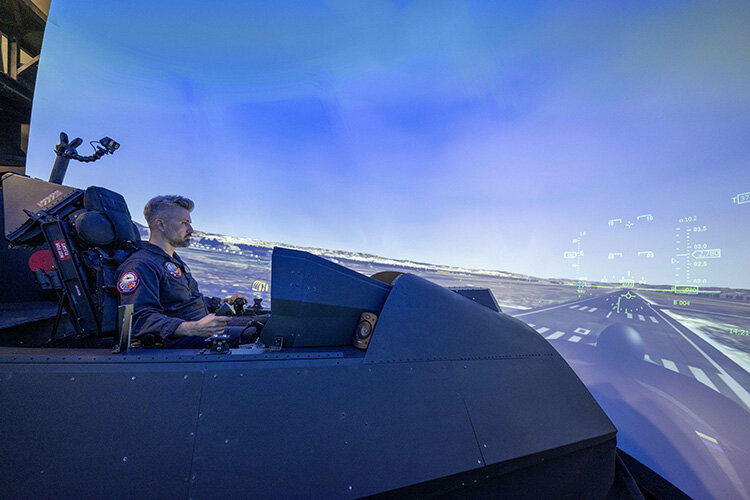
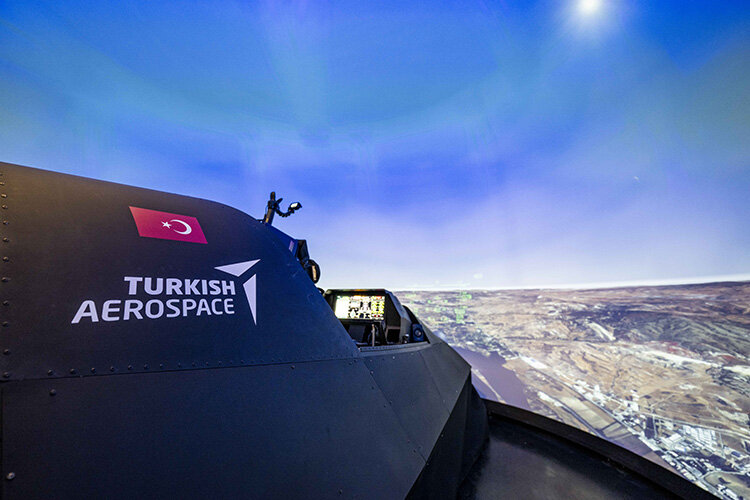
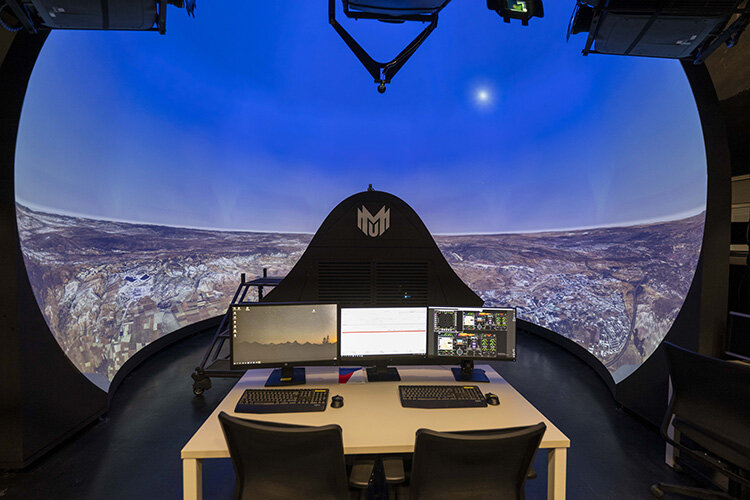
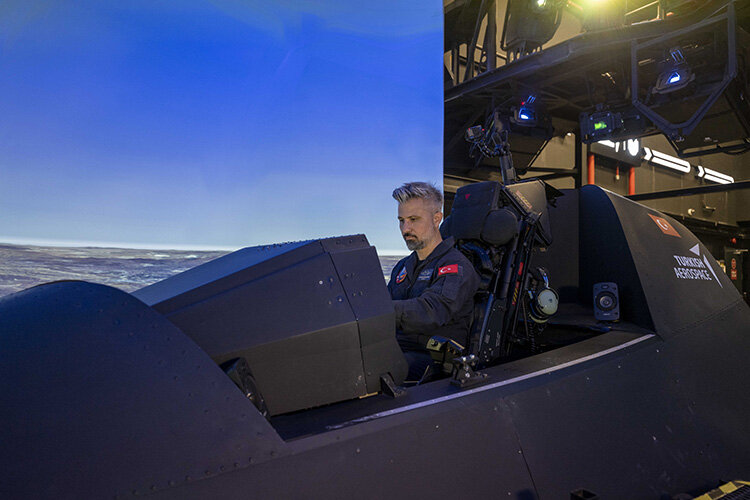
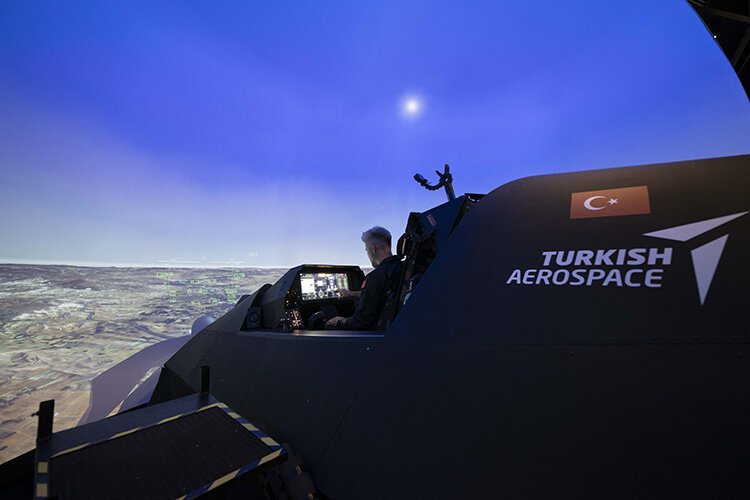
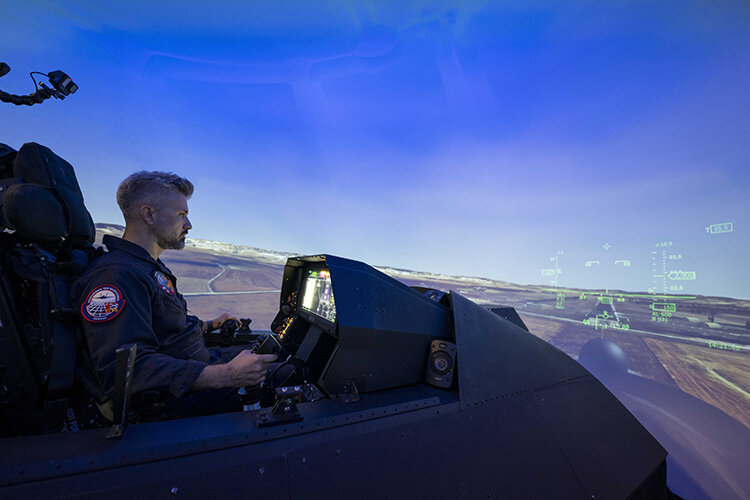
Nope, those side ones are just access hatchesDear Bora Çetkin took these pictures yesterday. As we can see, KAAN has 3 side-by-side weapon bays. I think the middle one accommodates larger munitions such as the MK series bombs or SOM-J missiles.
They kinda look too big to be the landing gear doors as they extend too far forward, I think the landing gear folds backwards in this case.
EDIT* I'm wrong, didn't see the picture from the rear there's no way it folds backwards hmm.
- Joined
- 29 November 2010
- Messages
- 1,773
- Reaction score
- 3,474
^ yeah I agree.
you also need to look at the side pics to see how far the bottom panels extend. they do seem not to be for the landing gears.
based on the pics so far.. it does seem Nart is correct
there are 3 bottom bays, one big one and two smaller ones.
and then there are the two side bays. so a unique 5 bay configuration?
in contrast, it doesnt seem there is enough space for two large tandem bottom bays.
you also need to look at the side pics to see how far the bottom panels extend. they do seem not to be for the landing gears.
based on the pics so far.. it does seem Nart is correct
there are 3 bottom bays, one big one and two smaller ones.
and then there are the two side bays. so a unique 5 bay configuration?
in contrast, it doesnt seem there is enough space for two large tandem bottom bays.
- Joined
- 15 July 2020
- Messages
- 1,482
- Reaction score
- 4,563
There was confirmation by the person who took the pictures, that the extra two side panelling is not for a weapons bay. To note the KAAN we are seeing pictured was specifically designed for ground based taxi runs (currently being converted for flights), so it is bound to have some oddities in it's panel design.
Radonislav
ACCESS: Confidential
- Joined
- 16 November 2022
- Messages
- 152
- Reaction score
- 214
There is space for 2 big tandem bays actually, did see them without those covers. Can't tell much for those gear+access hatch ones.
snne
ACCESS: Top Secret
- Joined
- 3 July 2022
- Messages
- 1,387
- Reaction score
- 4,505
It is now certain that the placement of the main weapon bays won't become certain for us until P1 is rolled out.
I reckon the development of the bays actually continue, i.e., it is not finished yet. That is why there are access hatches in place of the bays on the current P0 prototype as it mas only meant for ground tests at the start.
I reckon the development of the bays actually continue, i.e., it is not finished yet. That is why there are access hatches in place of the bays on the current P0 prototype as it mas only meant for ground tests at the start.
Similar threads
-
-
-
Combat use of F-16s in Mideast spurs fresh demand: Lockheed
- Started by Triton
- Replies: 1
-
Aerospace Cooperation Opportunities Between Europe and Turkey
- Started by snne
- Replies: 20
-

